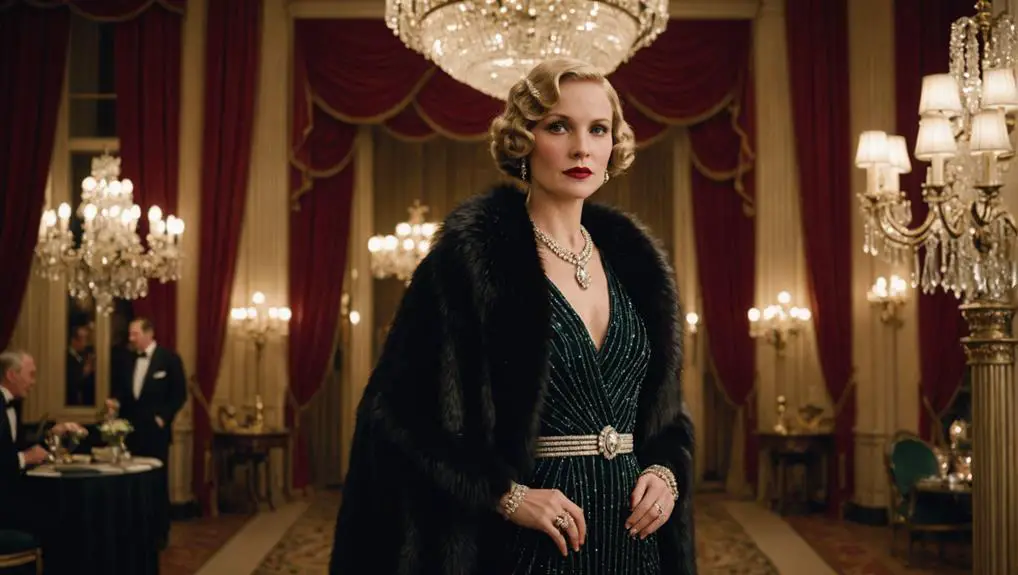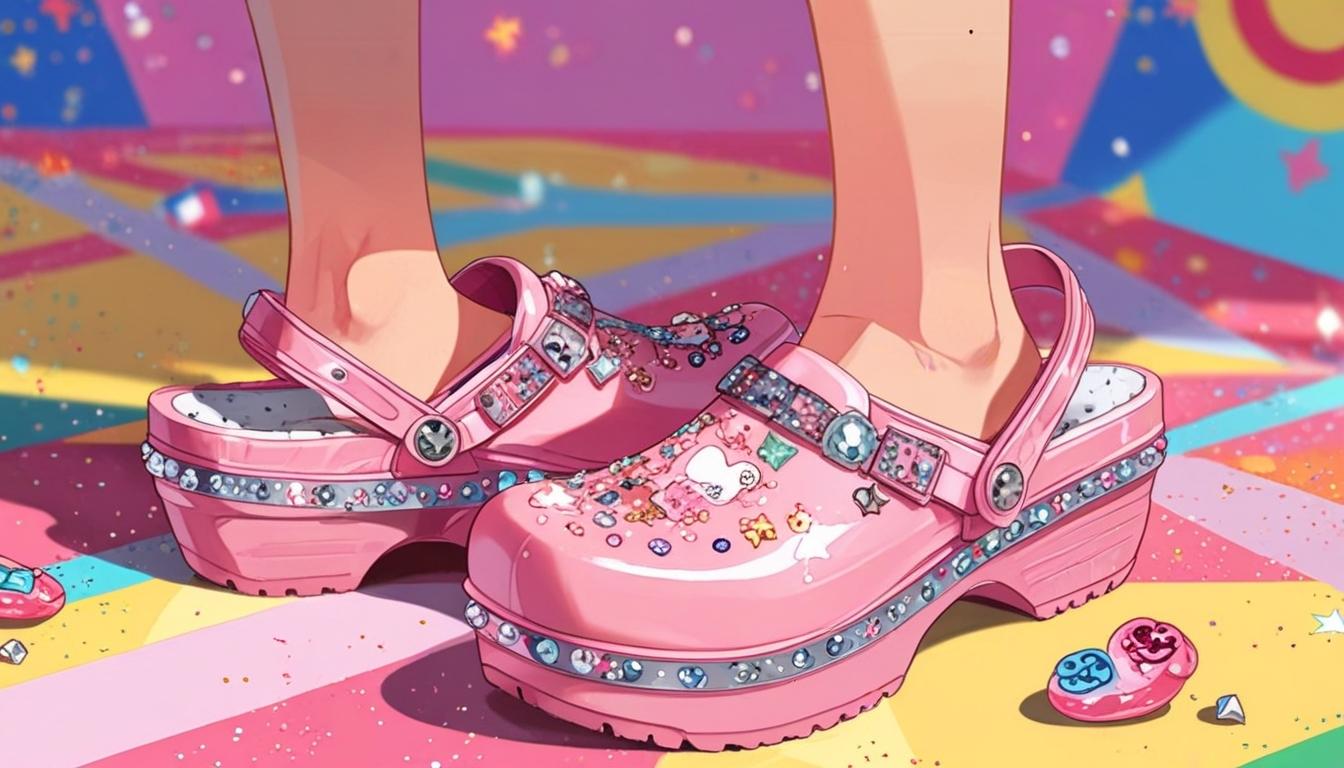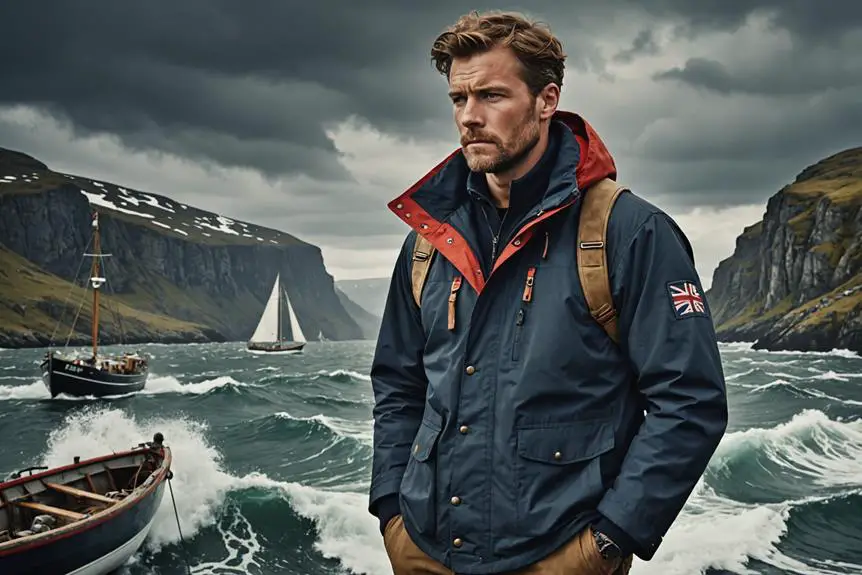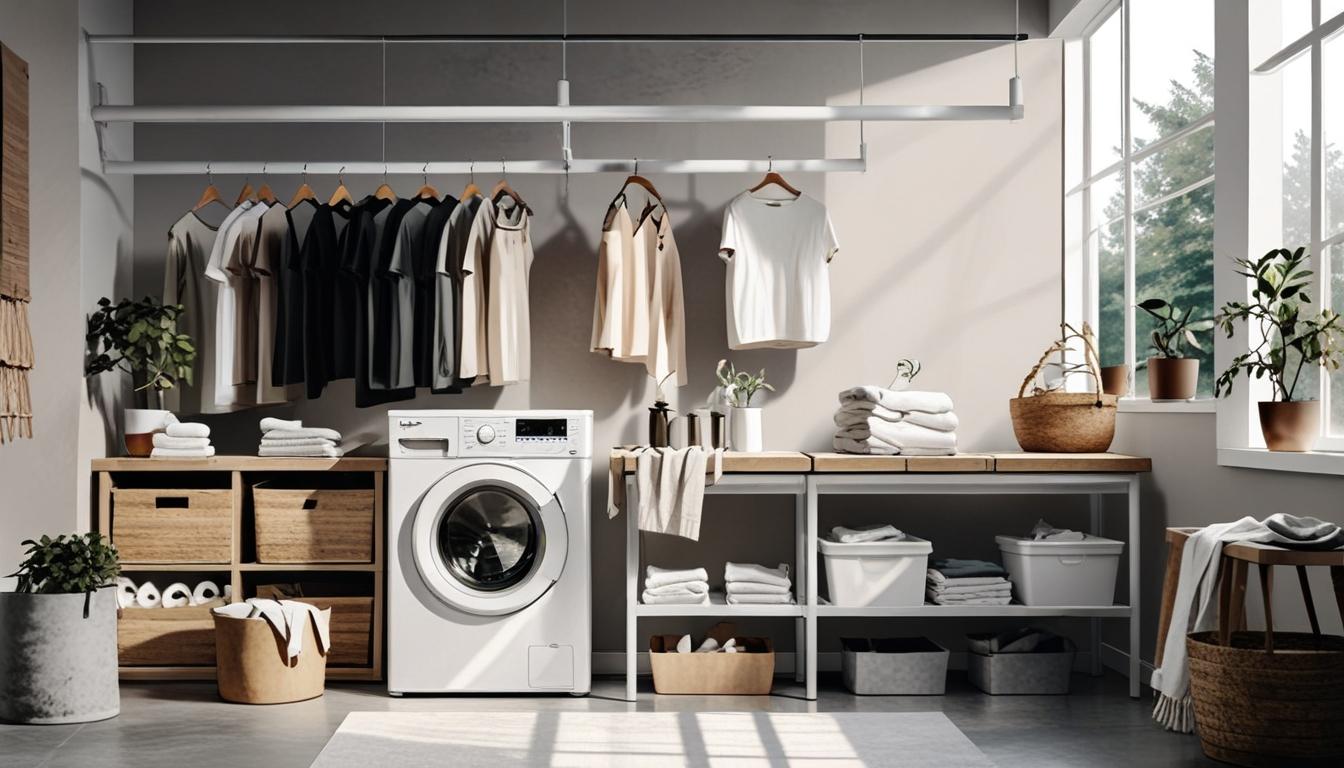In the 1930s, women's fur stoles became essential for evening wear, marrying elegance with practicality. Crafted from luxurious materials like mink and fox, these accessories enhanced fitted silhouettes and added warmth. The Art Deco influence is evident in their streamlined designs, featuring intricate detailing that turned stoles into conversation pieces. Wearing a fur stole signified social status and sophistication, reflecting a woman's individuality during a time of economic turmoil. As you explore the intricacies of vintage fashion, you'll uncover more about the cultural significance and changing perceptions surrounding these iconic pieces.
Historical Overview of Fur Stoles
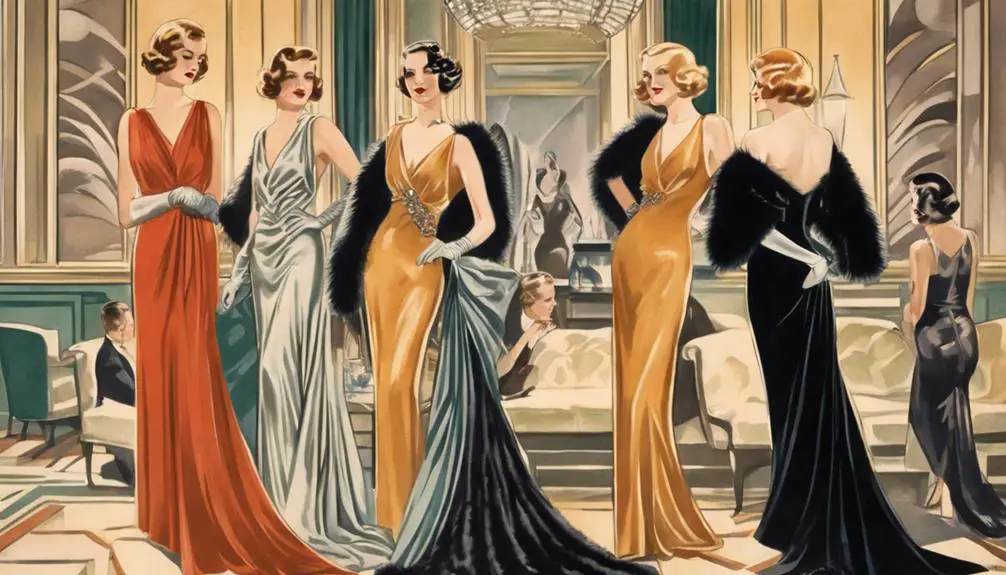
How did fur stoles become a staple of women's fashion in the 1930s? During this era, fur stoles emerged as essential accessories, elevating women's evening wear and formal attire. Made from luxurious materials like mink and fox, these vintage pieces showcased real fur in various hues, including rich browns that complemented a range of outfits. The stole wrap served not only as a source of warmth but also as a striking fashion statement. The craftsmanship of these stoles often reflected the quality and artistry found in vintage clothing labels, which provided essential information about the era and brand associated with each piece. Understanding the historical context of these fur stoles can enhance appreciation for their design and significance in fashion history, particularly regarding their unique identifiers.
The design of fur stoles in the 1930s often featured a sumptuous exterior lined with satin, enhancing both comfort and style. Many stoles included decorative elements, such as ribbons and tassels, which added an extra layer of sophistication. These embellishments transformed simple accessories into eye-catching pieces that reflected the elegance of the time.
The popularity of fur stoles coincided with broader societal trends that valued luxury and sophistication during the interwar period. Women embraced these stunning pieces as a means to express their status and style, solidifying the stole's place in fashion history. Consequently, fur stoles became synonymous with the glamorous aesthetic of the 1930s, defining women's fashion in that transformative decade.
Popular Fur Types and Styles
Fur stoles in the 1930s showcased a fascinating array of styles and materials that defined women's fashion during the decade. Mink, with its luxurious feel and durability, became the favored choice for many women. Fox and rabbit also gained popularity, offering versatility in design. The era's stoles ranged from elegant wraps and collar wraps to more elaborate full-length pieces, often adorned with decorative elements like ribbons and tassels, enhancing their visual appeal.
The Art Deco aesthetic heavily influenced these designs, emphasizing silhouettes that highlighted the waist and shoulders. Many vintage fur stoles featured multiple pelts, providing added volume and sophistication. Intricate detailing, such as tails or heads attached to the stole, transformed these accessories into stylish conversation pieces.
Notably, lighter-colored furs, such as off-white and cream, were preferred for evening wear, conveying sophistication and elegance. Genuine brown fur also made its mark, offering a classic touch. Whether you chose a chic fur scarf or a lavish fur stole, the styles of the 1930s remained timeless, reflecting both personal taste and the cultural context of the time.
Fashion Trends of the 1930s
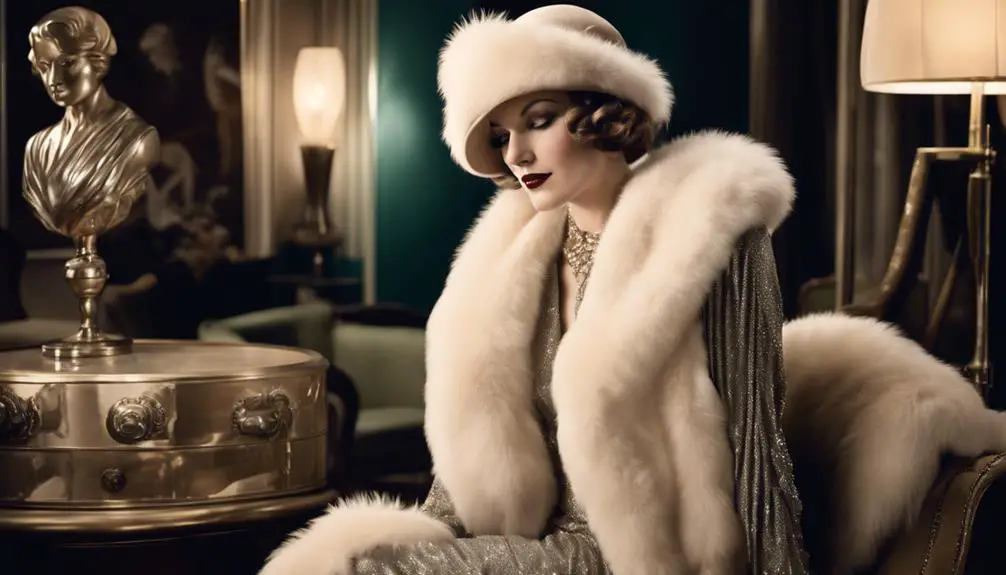
As the 1930s unfolded, a notable shift in women's fashion emerged, characterized by a blend of elegance and practicality. The era saw the fur stole rise to prominence, becoming an essential accessory for evening wear and formal occasions. You'd often find these luxurious stoles crafted from vintage fur mink, fox fur, and rabbit, enhancing the silhouette of fitted dresses.
The decade embraced art deco designs, emphasizing streamlined lines and sophisticated aesthetics. You'd pair your fur stole with tailored coats, creating a polished look emblematic of 1930s elegance. Decorative elements like ribbons and tassels adorned stoles, showcasing the meticulous craftsmanship that defined the period's fashion.
The Great Depression influenced consumer choices, leading to a demand for affordable vintage pieces that didn't compromise on style. Women sought out fashionable yet practical options, making the fur stole a versatile addition to their wardrobes. This unique fusion of luxury and accessibility allowed women to navigate the complexities of the time with grace, ensuring that 1930s fashion remained both chic and functional.
Cultural Significance and Symbolism
Often seen draped elegantly over the shoulders of well-to-do women, the fur stole in the 1930s was more than just a fashion accessory; it symbolized a woman's social status and sophistication. This GORGEOUS VINTAGE FUR item was a cultural marker of femininity, often associated with luxury and affluence. When you spotted a woman wearing a vintage mink fur stole or a women's fur fox mink, it immediately signaled her wealth and taste, especially at formal events.
The craftsmanship behind these pieces was remarkable, as high-quality furs like mink and fox were meticulously chosen to create genuine brown fur stoles and mink real fur stoles. The Art Deco movement's influence further entwined fur stoles with notions of elegance and glamour, making them essential to the decade's fashion narrative.
Wearing a fur stole, whether as a collar wrap brown or a fur stole full body, was a bold statement of modernity. It reflected the daring spirit of a changing society, where women sought to express their individuality and sophistication. Ultimately, these fur stoles were more than mere adornments; they were powerful symbols of status, identity, and femininity in the 1930s cultural landscape.
Ethical Considerations in Vintage Fashion
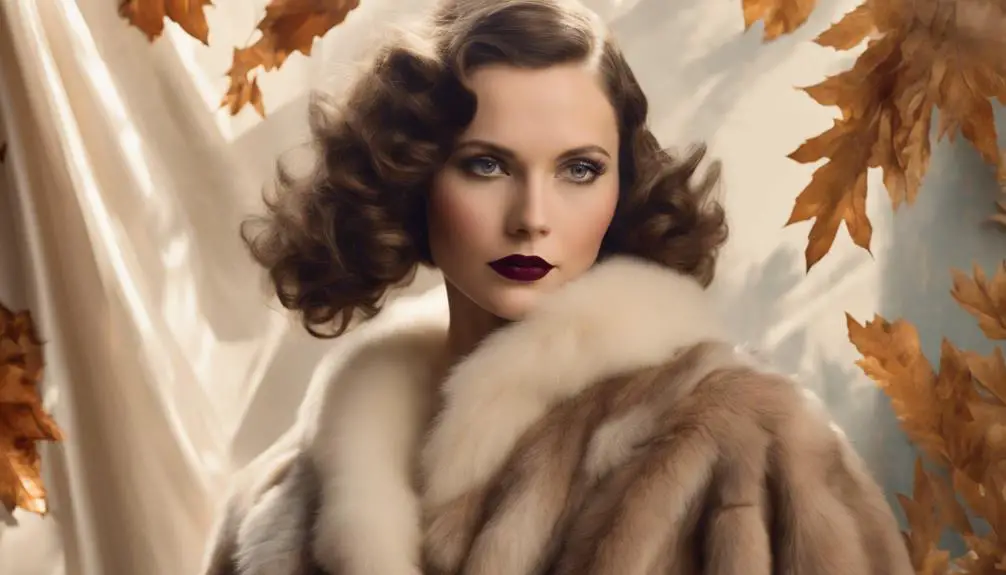
The resurgence of vintage fashion, especially the allure of 1930s fur stoles, brings forth a complex dialogue about ethical considerations in modern consumer habits. As you explore vintage fur, you're stepping into a world that once epitomized luxury status, but also raises significant questions about animal rights and responsible consumption.
Wearing vintage pieces is often seen as more sustainable compared to new fur production. By choosing vintage, you promote the reuse of existing materials, thereby reducing the demand for fresh sourcing that often involves animal cruelty. This perspective allows you to embrace fur fashion while being mindful of its environmental impact. Many argue that vintage items don't contribute to ongoing animal rights issues associated with modern fur farming, making them a more ethically sound choice.
However, some consumers still grapple with guilt over wearing vintage fur, reflecting a broader societal shift towards sustainable fashion and environmentally friendly practices. By understanding the historical context of these stoles, you can appreciate their beauty while acknowledging the complexities of past practices, ultimately making more informed choices in your fashion journey.
Frequently Asked Questions
What Years Were Fur Stoles Popular?
Fur stoles gained immense popularity from the mid-Victorian era through the late 1960s, peaking in the 1930s. They symbolized luxury and elegance, even during economic struggles, reflecting societal values and fashion trends of the time.
Are Fur Stoles Worth Anything?
Yes, fur stoles can be worth a significant amount. Factors like condition, quality, and brand influence their value, with prices ranging from $75 to over $1,000 for high-end pieces. Unique designs may fetch even more.
Did They Wear Fur Coats in the 1930s?
Yes, women wore fur coats in the 1930s, showcasing elegance and status. Despite the Great Depression, luxurious materials like mink and fox remained popular, reflecting a desire for sophistication even during challenging economic times.
What to Do With Mink Stoles?
You can repurpose mink stoles into modern fashion statements, preserve them in breathable bags, or display them as unique decor. If you're ready to part ways, consider selling them online or at vintage shops.
